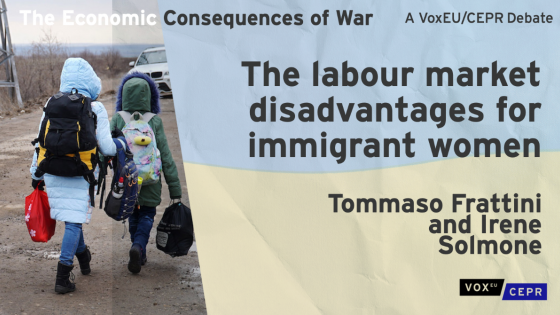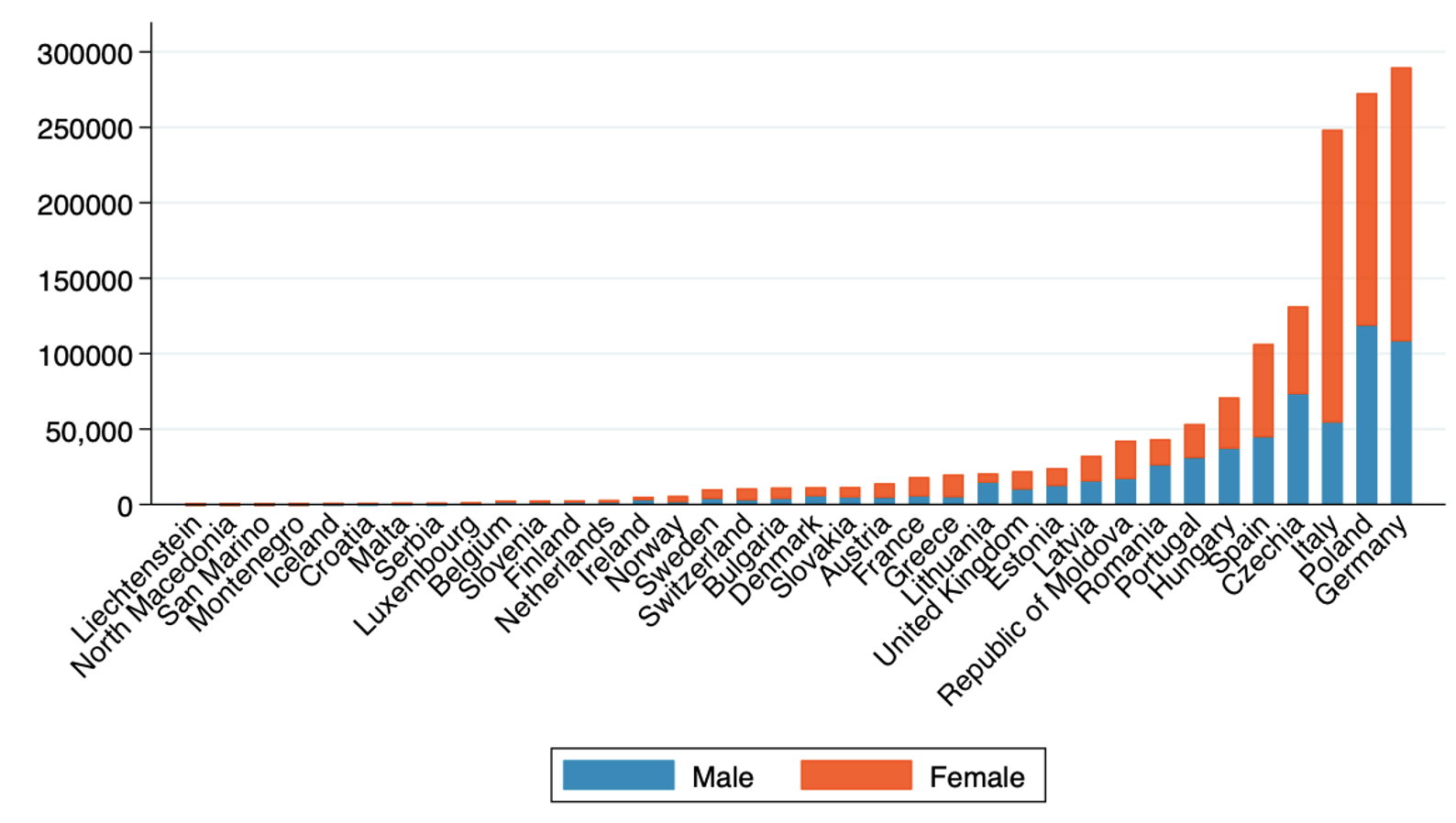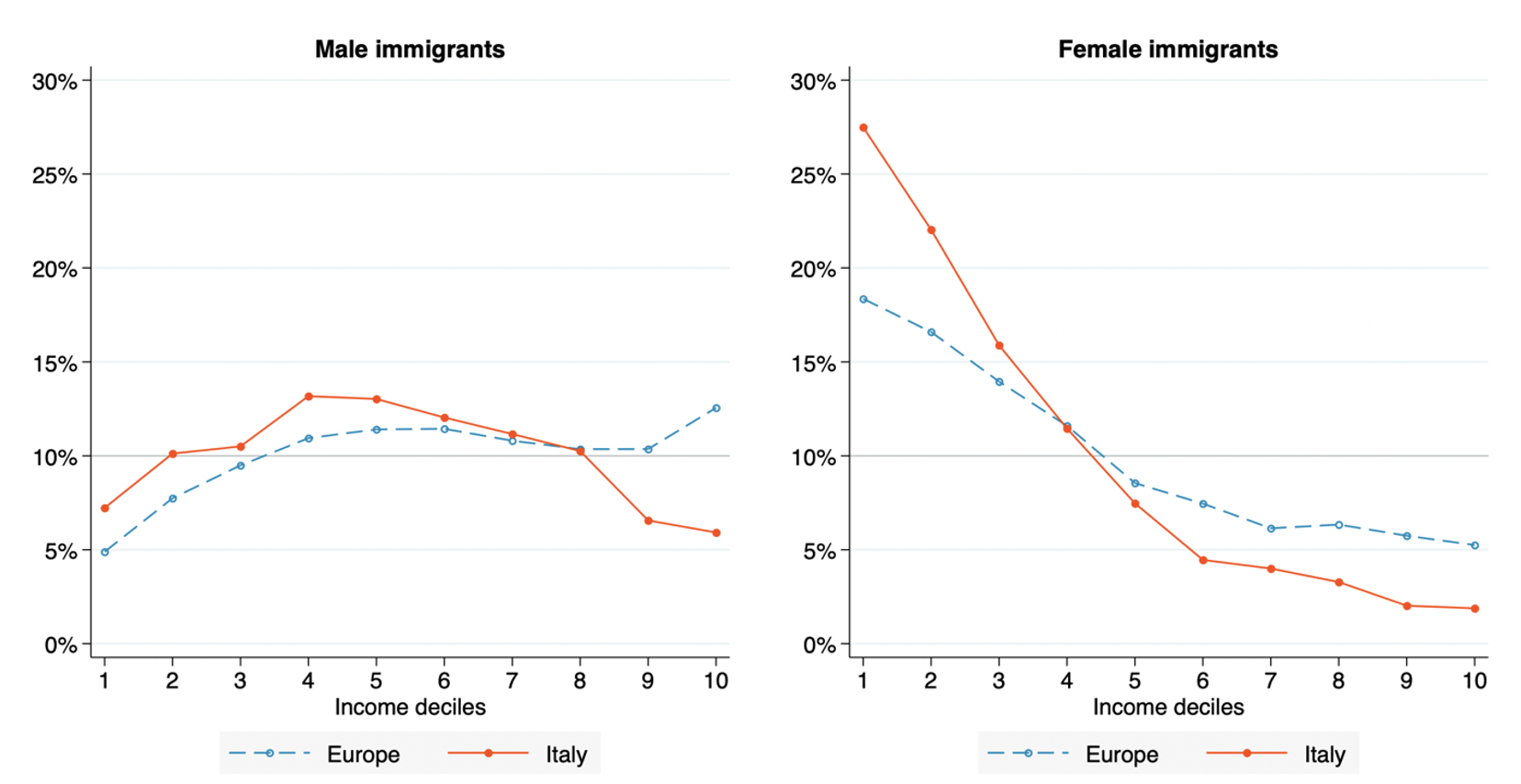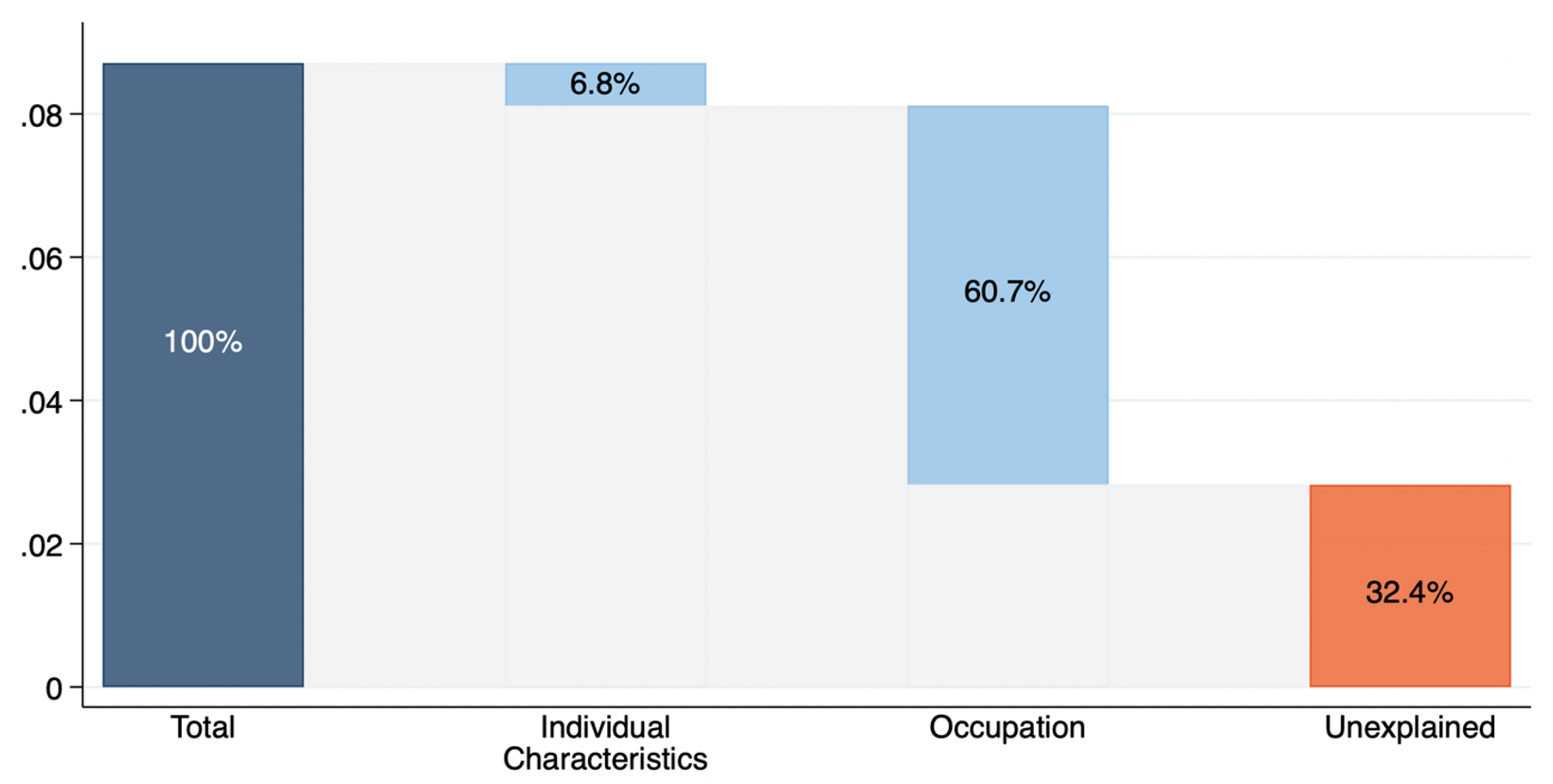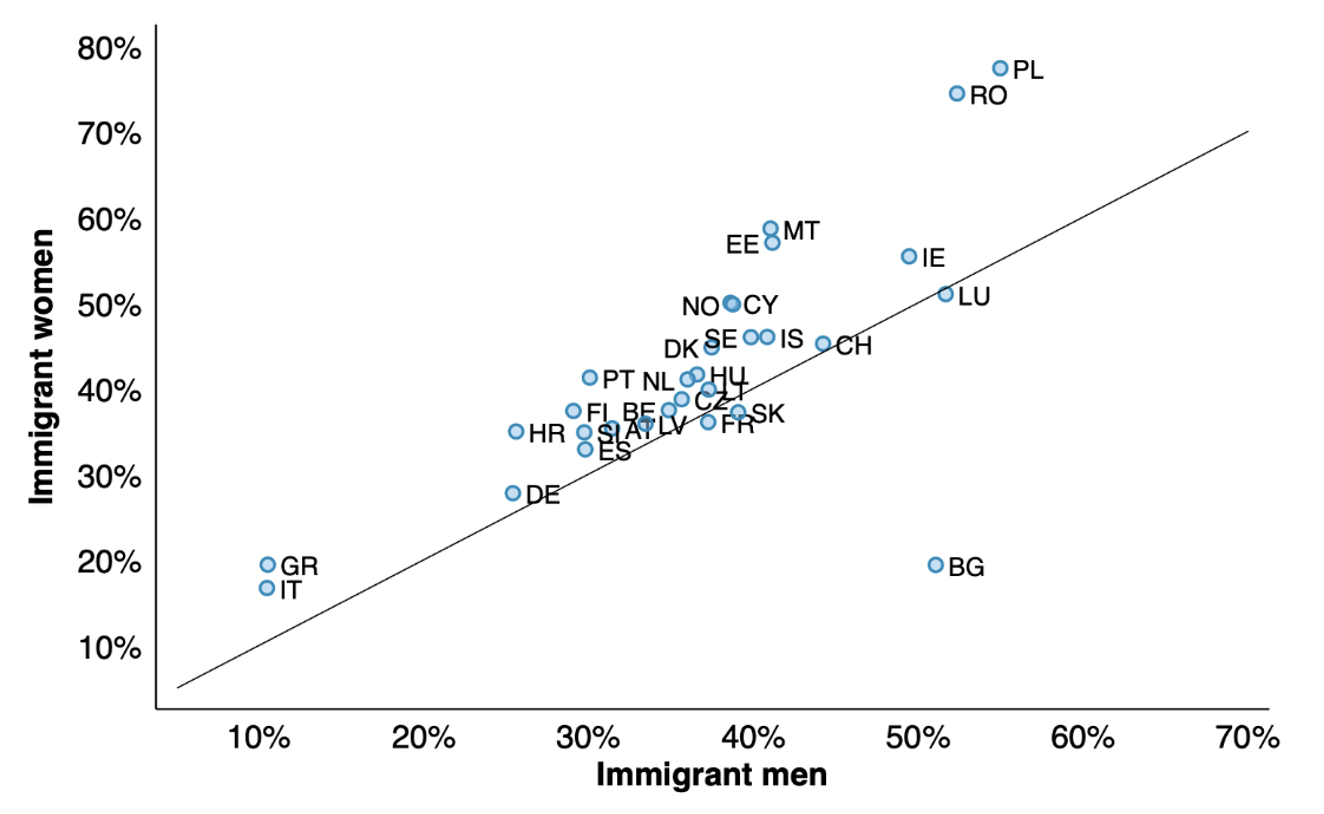Editors' note: This column is part of the Vox debate on the economic consequences of war.
Between the start of the conflict in Ukraine on 24 February 2022 and 15 March, the number of refugees fleeing the country reached three million, according to the UN High Commissioner for Refugees (UNHCR).1 With the critical conditions that the population in the eastern part of the country is facing, with dramatic food and water shortages and no electricity, and the expansion of the conflict towards western Ukraine, it is likely that such flows will not slow down anytime soon. UNHCR estimates that four million people may end up fleeing Ukraine. By way of comparison, it took one year, from 2013 to 2014, for the flow of Syrian refugees towards Turkey to reach one million individuals.2
Ukrainians in Europe
On 4 March 2022, following a proposal from the EU commission, the Council activated the Temporary Protection Directive thereby entitling everyone fleeing Ukraine and not having a safe country to return to receive international protection in EU countries. The activation of the directive implies that Ukrainian refugees will not have to go through the often uncertain asylum application process (Hatton 2021), and that they will have immediate access to employment (Fasani et al. 2020), accommodation, and social welfare (Aksoy et al. 2020).
Since the directive allows refugees from Ukraine to receive protection in any EU member state (with the exception of Denmark), they will also be free to choose the EU country where to settle.3 Most Ukrainian refugees are currently located in neighbouring countries: more than 1.8 million are in Poland, almost 500,000 in Romania, and more than 300,000 are in the Republic of Moldova. However, it is likely that over the next weeks there will be significant secondary movements toward other countries farther away from the Ukrainian borders. Pre-existing networks of Ukrainian immigrants will likely play a key role in this. In fact, it is well known that one of the main determinants of immigrants’ location choices is the presence of migrant networks (Munshi 2020).
In 2020, there were about 1.5 million Ukrainian migrants in Europe, of which slightly more than 1.4 million in a EU country. Among those in EU countries, 19% were in Germany, 18% in Poland, 17% in Italy (Figure 1), according to UN data.4 These countries are therefore those that will likely receive the largest inflows over the next weeks.
A specific feature of the Ukrainian migrant population is the unusually high presence of women: while in 2020 women made up 52% of the total migrant population in Europe, among current Ukrainian immigrants this share reaches 55% on average.5 In some countries, however, the gender imbalance is even stronger: in Greece and Italy, as many as three quarters of Ukrainians were female, while in Germany and Poland women represented about 60% of the Ukrainian population.
Figure 1 Stock of Ukrainian migrants mid-2020, by gender
Source: UN – International Migrant Stock.
Women are not only the majority of current Ukrainian immigrants, but they are also the majority among the new refugees. Even though precise data on the characteristics of the new Ukrainian refugees are not available yet, according to the UN Office for the Coordination of Humanitarian Affairs (OCHA), the overwhelming majority of Ukrainians who have left the country in the past three weeks are women and children, mainly because of the mandatory conscription of men aged 18 to 60.6
The double disadvantage of immigrant women in European labour markets
The rapid incorporation of these displaced women in the host country labour markets will be crucial for their longer-term economic and social integration (Brell et al. 2020). Unfortunately, in the past two decades immigrant women in Europe have faced a double disadvantage, determined by both their gender and by their immigrant status. Additionally, the labour market outcomes of immigrant women in the EU have not improved over time, neither overall nor relative to those of native women and immigrant men (Frattini and Solmone 2022).
In 2020, the immigrant-native differential in employment probability was ten percentage points on average across the EU. However, the gender differences are substantial: even though native female employment rates are already significantly lower than male ones (71% versus 82%), the immigrant gap among men is six percentage points, while the gap between immigrant and native women is as high as 14 percentage points. In Germany, the European country with the largest presence of Ukrainian women, the employment probability gap of immigrant women relative to native women was 22 percentage points.
Figure 2 Immigrant-native difference in employment probability for women, 2020
Furthermore, the immigrant gender gap in employment probability in Europe has remained unchanged in the past ten years. While the native differential has been gradually decreasing over time (from 17 percentage points in 2005 to 11 percentage points in 2020), the gap between male and female immigrants is higher, and it has been equal to 18 percentage points since 2010. This is not only true on average: in almost all European countries, the immigrant gender gap is larger than the native one.
Besides having lower employment probabilities overall, employed immigrant women are disproportionately more likely than both immigrant men and native women to be in the bottom decile of the national income distribution. Across Europe, 35% of immigrant women are in the bottom income deciles, and less than 5% reach the top decile. This concentration is even stronger in Italy, the only country among those currently hosting a significant number of Ukrainians, where the share of immigrant women in the two bottom deciles reaches 35%, and the share in the top decile is less than 2% (Figure 3).
Figure 3 Distribution of immigrant men and women across national income deciles, 2020
The role of occupational segregation
Immigrant women are also overwhelmingly employed in low-pay and low-skill occupations. In fact, one of every four employed immigrant women in Europe works in an elementary occupation, which requires a low level of competence and entails repetitive, manual tasks. Of these, three quarters work as ‘domestic, office or hotel cleaners and helpers’, while one immigrant woman in every ten is employed in a personal care job, such as home-based personal care workers, health assistants, or childcare workers (Peri et al. 2013, Butcher et al. 2022 for the US).
The high concentration of immigrant women in occupations which offer very little economic gratification and very few career prospects (Fasani 2020), as well as the total number of hours worked, explains 61% of their higher probability of being in the bottom income decile compared to native women (Figure 4), who already earn significantly less than native men (Palladino et al. 2021), and – surprisingly – than immigrant men. Individual characteristics such as age and education explain less than 7% of the differential. Conversely, as much as one third of the immigrant-native gap in the probability of being at the bottom of the income distribution between women cannot be explained by any of those factors, indicating a specific immigrant-women labour market penalty.
Figure 4 Immigrant-native difference in probability of being in the bottom decile: Overall and after accounting for individual characteristics and occupational clustering, women, 2020
A higher level of education does not help immigrant women’s prospects
Such a strong disadvantage in the labour market cannot be explained by individual characteristics, as we have shown above. In fact, immigrant women are better educated than immigrant men: the share with a tertiary education was 33% in 2020, three percentage points higher than among men, while the share with at most a lower secondary degree was 33%, one percentage point less than men. Their education levels are better not only on average, but in almost all European countries (Figure 5).
Figure 5 Share of immigrant men and women with a tertiary degree, 2020
The integration of immigrant women in European labour markets seems therefore not fully straightforward. Remarkably, the difficulties do not arise from unfavourable characteristics of immigrant women characteristics, but from the cumulated effect of an immigrant and a gender disadvantage. Both types of hurdles should be adequately taken into account when designing policies aimed at increasing labour market participation and success. These factors should particularly be given consideration at a moment, like now, when a large number of predominantly female refugees is about to join the European labour markets.
References
Aksoy, C G, P Poutvaara and F Schikora (2020), “First time around: Local conditions and the integration of refugees”, VoxEU.org, 11 December.
Brell, C, C Dustmann and I Preston (2020), "The Labor Market Integration of Refugee Migrants in High-Income Countries", Journal of Economic Perspectives 34(1): 94-121.
Butcher, K, K Moran and T Watson (2022), “Immigration and the care of America’s older population”, VoxEU.org, 22 February.
Fasani, F (2020), “Immigrant key workers in Europe: The COVID-19 response that comes from abroad”, VoxEU.org, 05 May.
Fasani, F, T Frattini and L Minale (2020), “The scarring effects of employment bans for asylum seekers”, VoxEU.org, 09 June.
Frattini, T and I Solmone (2022), Immigrant integration in Europe, 6th Migration Observatory Report, Centro Studi Luca d’Agliano and Collegio Carlo Alberto.
Hatton, T (2021), “Asylum-seeker recognition rates and EU asylum policy”, VoxEU.org, 19 November.
Munshi, K (2020), "Social networks and migration", Annual Review of Economics 12: 503-524.
Palladino, M G, A Roulet and M Stabile (2021), “Evolution of the wage gender gap: New firm-level evidence from France”, VoxEU.org, 01 December.
Peri, G, A Romiti and M Rossi (2013), “Immigration, elderly care and labour-force participation: Can immigration help women retire later?”, VoxEU.org, 08 September.
Endnotes
1 https://data2.unhcr.org/en/situations/ukraine#_ga=2.184802337.94711366.1647467313-1018851860.1647467313
2 Source: https://www.unhcr.org/refugee-statistics/download/?url=5nKJyr
3 https://ec.europa.eu/migrant-integration/news/eu-invokes-temporary-protection-directive-help-those-fleeing-ukraine_en
4 Source: https://www.un.org/development/desa/pd/content/international-migrant-stock
5 Source: https://www.un.org/development/desa/pd/content/international-migrant-stock
6 Source: https://reliefweb.int/report/poland/osce-states-meet-discuss-anti-trafficking-prevention-measures-amid-humanitarian-crisis
